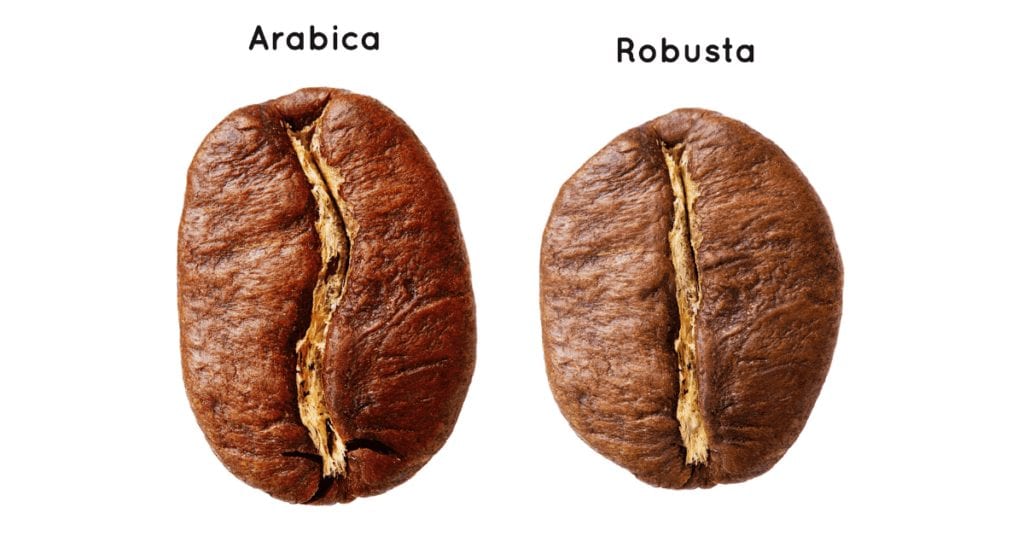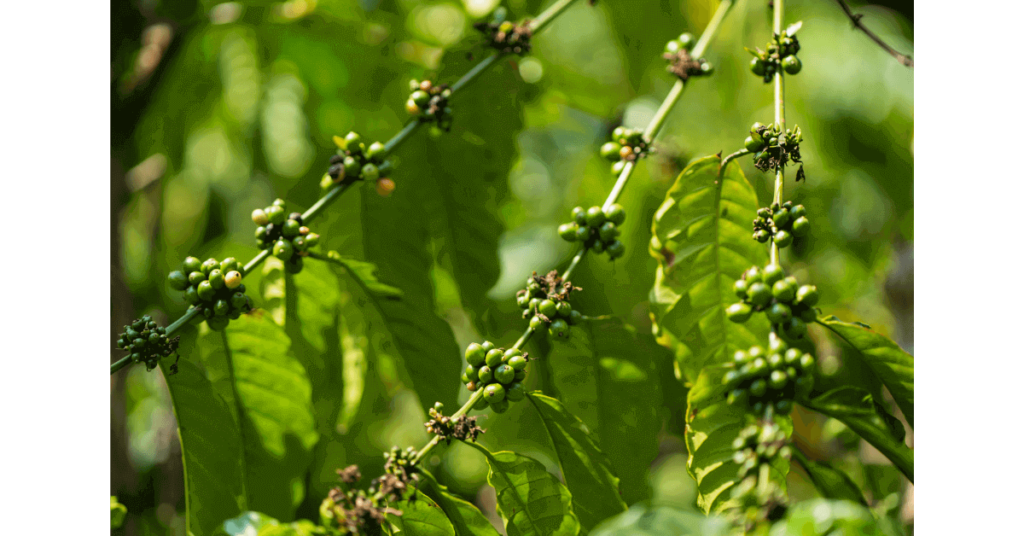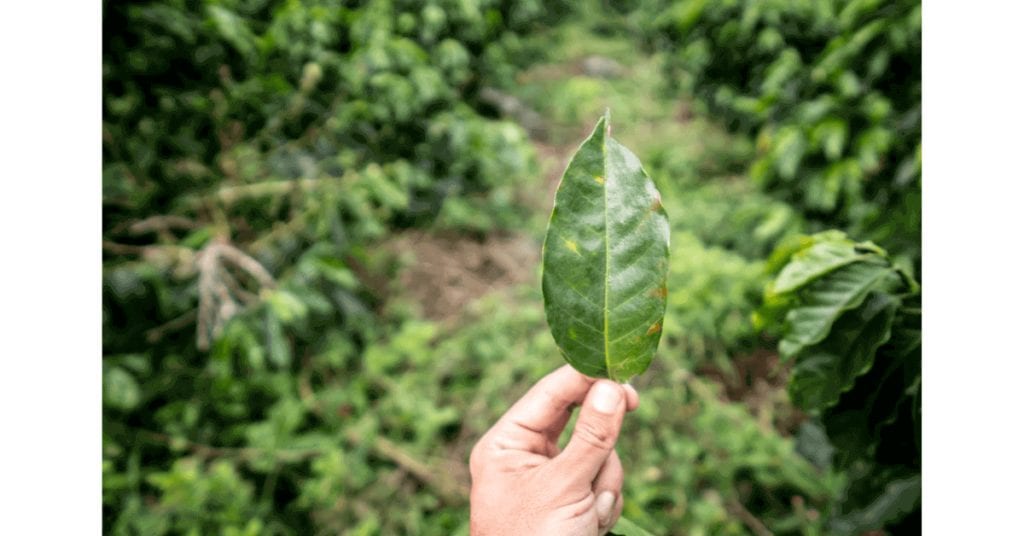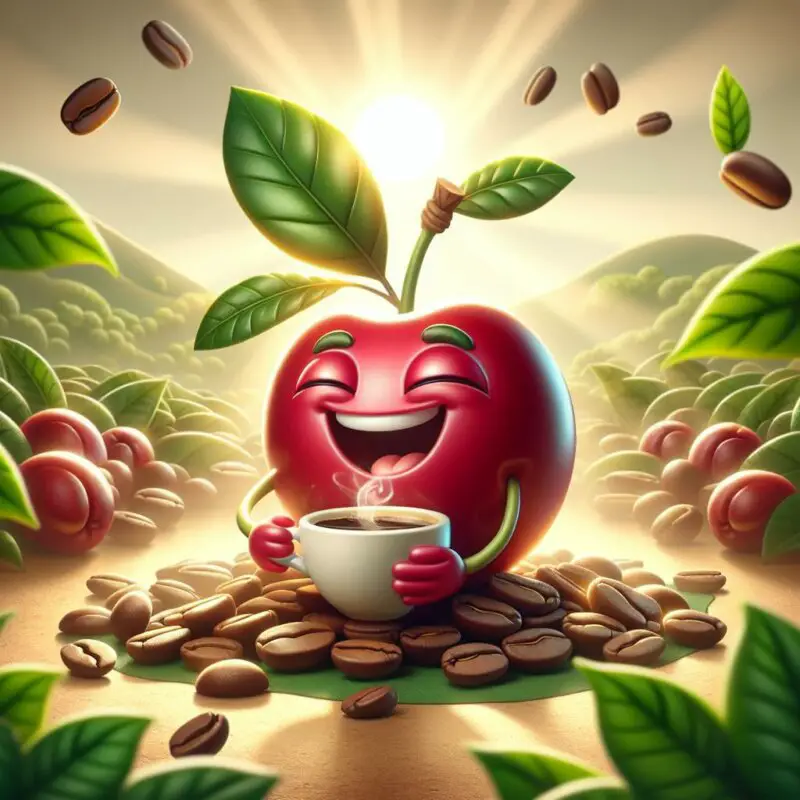This post may contain affiliate links. Please read my disclosure for more info.
Did you know there are up to 100 types of coffee plants? But the coffee in your cup likely comes from just two: Arabica and Robusta. Dive into the world of these coffee giants!
Why don’t we consume any other type of coffee beans?
These rare beans might become more common soon. Stay tuned!
Join us on an exciting journey through the world of coffee beans, exploring everything from the everyday to the extremely rare. We’ll compare Arabica and Robusta, discover beans that are naturally low in caffeine, and uncover the types that could protect coffee from diseases threatening Arabica plants around the globe. Get ready to dive into the rich variety of coffee beans!
Excited? You should be.
Common Types of Coffee Beans: Arabica vs Robusta

Every coffee bag you pick, every brew you make, and each latte or cappuccino you enjoy shares a secret. Whether you’re sipping on Ethiopian, Italian favorites like Illy and Lavazza, or Costa Rican coffee, they all have one thing in common. They’re made from just two types of beans: Arabica and Robusta.
Arabica and Robusta beans dominate, comprising 98% of global coffee production.
Arabica beans (Coffea arabica)
Arabica beans make up 60% of the coffee produced globally. They are the most sensitive type among popular coffee varieties, easily affected by diseases. We’ll dive deeper into this topic later.
Arabica coffee trees thrive in high places where rain is frequent and the shade is plentiful. Because they’re usually under 6 feet tall, caring for them is a breeze. Pruning and picking the beans are simple tasks, making them a favorite among growers.
Arabica coffee plants, when carefully nurtured, yield beans that delight the senses with their perfect acidity, lively body, and rich flavors and aromas. Unlike other types, Arabica beans pack more sugar, more natural oils, and have less bitterness and caffeine, making each sip a true pleasure.
Arabica plants are easy to grow, harvest, and process, making their coffee cherries a key player in today’s coffee world. Their unique traits have won over coffee lovers everywhere.
Robusta beans (Coffea canephora)
Robusta beans, making up nearly 38% of the world’s coffee, are real tough cookies. They can handle harsh conditions, fight off diseases, and don’t mind if it’s super hot or if rain comes and goes. Whether it’s up high or down low, they grow strong.
Robusta coffee beans pack more caffeine punch than other types. This extra caffeine isn’t just for kicks—it’s the plant’s shield against diseases and pests, making Robusta tough and resilient.
Robusta coffee packs a bold, bitter punch with a silky feel and often whispers of chocolate in every sip. Though pure Robusta is a rare find, it’s a treasure in espresso blends. Why? Its low oil magic creates a lush, creamy crema that coffee lovers adore.
Arabica vs Robusta
- Arabica beans are bigger and flatter than Robusta beans which tend to be small and round.
- Robusta is about twice as caffeinated as Arabica. 1.7-2.5% compared to 0.8-1.4%.
- Robusta has more chlorogenic acid and less sugar than Arabica, making it much more bitter.
- Robusta is much cheaper than Arabica due to its resilience, ease of production, and rapid growth.
Rare Types of Coffee Beans
Even passionate coffee lovers often stick to Arabica and Robusta. But dive deeper, and you’ll discover the unique Liberica and Excelsa beans. Explore these hidden gems for a new taste adventure!
Rare yet reachable, these gems are scattered across the globe. With a bit of effort and curiosity, you might just be lucky enough to experience their unique charm. Dive in and start your hunt!
Liberica beans (coffee liberica)
In 1890, a disease wiped out 90% of the world’s favorite coffee, Arabica, leaving everyone scrambling for an alternative. That’s when Liberica, a unique coffee variety, stepped into the spotlight as the new hero.
The Philippines took a bold step by being the first to grow Liberica coffee plants, giving their coffee scene a big boost. But, when they gained independence from the US in 1898, interest in Liberica beans dropped significantly. This change had a huge impact on their coffee industry.
For almost 100 years, the world almost lost Liberica coffee. But in 1995, just in time, conservationists saved the last few plants. They moved them to the Philippines, where they thrived. Now, we can enjoy this rare coffee again!
Liberica coffee, rare and unique, makes up less than 2% of global coffee production. Interestingly, 90% of it comes from Malaysia, making it a special find for coffee lovers.
Liberica beans stand out in the coffee world! They’re bigger than most and uniquely shaped, not following the usual pattern. Plus, their trees are giants, reaching up to 59 feet tall. Dive into the fascinating world of Liberica coffee!
Liberica coffee stands out with its floral and fruity scents, offering a smoky or woody flavor and a rich texture. It’s sweeter and has less caffeine compared to Robusta and Arabica beans.
Excelsa beans (coffee liberica var. dewevrei)

Excelsa, once thought to be its own kind, is actually a unique type of Liberica coffee bean. It’s known for its distinct flavor profile.
Excelsa, a rare coffee plant, thrives mainly in Southeast Asia. Its unique location means many coffee fans are yet to discover or taste this hidden gem.
Excelsa beans give your coffee a unique twist, mixing tart and fruity tastes often found in light roasts with the deep, roasty flavors of dark roasts. They’re a popular choice for coffee blends, adding a rich layer of flavor and complexity.
New Types of Coffee Beans
Exciting news for coffee lovers! Scientists are finding new types of coffee beans, both wild and specially bred. Some bring amazing new tastes, others grow without caffeine, and a few might even help fight diseases hurting coffee plants today.
Chances are slim you’ll taste these rare beans soon. But, coffee lovers, rejoice! The future promises exciting times with a world of delicious coffee varieties waiting to be explored.
Charrier beans (coffee charrieriana)
In 2008, a big discovery was made! Meet the Charrier bean, the first ever naturally caffeine-free coffee plant found in Central Africa. It’s only the second of its kind in all of Africa. Though it’s not yet available for purchase, decaf fans have an exciting new option on the horizon.
Arabica/Robusta hybrids (Timor and Arabusta)
Coffee lovers, listen up! There are two cool coffee plant hybrids out there – Arabusta and Timor. Arabusta popped up in Africa, while Timor was discovered in the 1940s on Timor island, close to Indonesia. What’s super interesting about Timor is that it’s grown today for a special reason. It fights off leaf rust, a nasty disease that usually hits Arabica plants hard. Isn’t that awesome?
Sarchimor beans
Sarchimor is a special coffee blend, born from a mix of Timor and Costa Rican Arabica beans. Coffee lovers cherish it for its toughness against leaf rust and stem borer pests. First grown in Costa Rica, this robust hybrid has now made its way to India too.
Catimor beans
Catimor is a unique blend, born from Timor and Brazilian Arabica beans. Created in Portugal in 1959, this hybrid has traveled all the way to India, where it’s known as Cauvery. Perfect for coffee explorers!
Will Leaf Rust Kill Drive Arabica Beans to Extinction?

In 1890, a disease called coffee rust wiped out 90% of the world’s Arabica coffee, making Liberica coffee popular for a bit. But that was just the start of its havoc.
Since 1990, coffee leaf rust has plagued every major coffee-producing country. In 2012, an epic outbreak swept through 10 nations in South and Central America. This disease caused a staggering $3 billion in crop damage by 2017, forcing almost 2 million farmers to lose their livelihoods.
In October 2020, the dreaded leaf rust hit several Hawaiian islands, putting the beloved Kona coffee beans at risk.
Coffee leaf rust is a tricky fungus that can outsmart many sprays meant to kill it, and sadly, there’s no cure yet. It’s tough to measure its full damage, but imagine this: some places have seen up to 80% of their coffee crops wiped out by this disease.
Coffee rust is a big problem for Arabica coffee plants, and it gets worse because of how these plants are usually grown. On coffee farms, you’ll often find lots of these plants packed tightly together, all of the same type. This setup makes it super easy for diseases like coffee rust to quickly move from plant to plant, affecting the whole farm and even those nearby.
Many of our favorite Arabica coffee types come from tiny, special places. Every time there’s an outbreak, we’re at risk of losing a precious slice of coffee heritage. Imagine if something like the 1890 outbreak happens again – we could lose so much more!
The future of coffee looks bright with hybrids fighting leaf rust, especially if they keep the beloved traits of Arabica.
Closing Thoughts
In the coming years, Arabica and Robusta beans will lead the coffee scene. Arabica will be loved for its rich flavors and slight acidity, staying a favorite among coffee lovers.
Soon, we’ll see new hybrid coffees entering the market. It’s exciting to think about how these blends will change our coffee experience in the years to come!
Some hybrids could be our heroes, protecting our beloved coffee from the dreaded coffee leaf rust. Others might revolutionize the decaf scene. And then there are those mysterious ones—I can’t wait to taste what surprises they hold!



